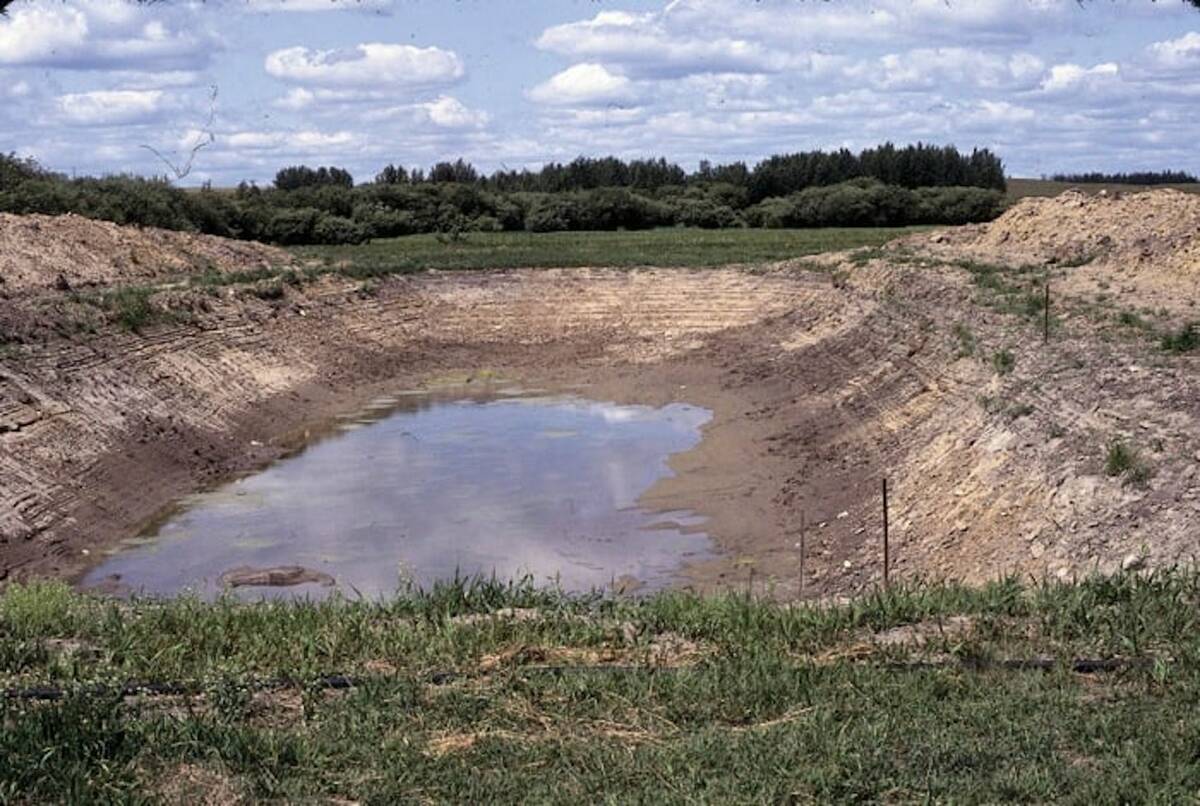A proposal to drain water out of Devils Lake, North Dakota, could affect the quality of water entering Manitoba via the Red River.
Devils Lake has risen several feet since 1992 due to a wet cycle. The rising waters have submerged thousands of acres of farmland and threaten communities alongside the lake.
The United States Army Corps of Engineers is working on designs for a large pipeline that would draw water off Devils Lake and feed it into the Sheyenne River. The Sheyenne eventually connects with the Red River, which flows north into Manitoba.
Read Also

Dry summer conditions can lead to poor water quality for livestock
Drought conditions in the Prairies has led to an decrease in water quality, and producers are being advised to closely monitor water quality for their animals.
Detailed designs for the pipeline could be ready as early as next summer and construction could start in the fall of 1999, said Bill Spychalla, manager of the project.
The main issues are water quality and whether fish and parasites in Devils Lake could harm fisheries downstream. Spychalla believes the project can satisfy all environmental concerns, in Canada and the U.S.
“The impacts will be very small,” he said.
Salt levels in Devils Lake are higher than those of the Sheyenne and Red rivers. However, water released through the pipeline would raise salt concentrations in the Sheyenne only “slightly,” Spychalla said.
“Although it will be a change, it will not be a major change.”
He’s confident that change will still comply with water quality standards set by North Dakota and the U.S. Environmental Protection Agency. The standards of Minnesota and Manitoba will also be looked at, said Spychalla, since the Red River flows along the border between Minnesota and North Dakota.
As for the fish, striped bass appears to be the only species in Devils Lake that’s foreign to the Sheyenne and Red rivers. North Dakota Game and Fish released striped bass into the lake during the 1970s.
“They have found no evidence that any of them ever reproduced,” Spychalla said. The bass have a lifespan of about 20 years, he said, which means they’ve probably died off by now.
Canada involved
The International Joint Commission is aware of the proposed pipeline project in North Dakota. The commission gets involved with issues that could affect the quality of water passing between Canada and the U.S.
“The government of the United States will consult the commission on this issue,” said Fabien Lengelle of the commission in Ottawa. “It hasn’t done so yet. We’re still waiting.”
Other concerns
Manitoba’s natural resources department is also awaiting information on the pipeline proposal. Water quality is one of the issues it will want to examine, said Steve Topping, director of water resources. It will also look at what types of fish and parasites might be released from Devils Lake.
Topping said he can sympathize with the plight of people living near the North Dakota lake. Last year, the Red River surged over its banks, causing the worst flood seen by Manitoba this century. However, Topping’s department plans to remain vigilant concerning the pipeline proposed at Devils Lake.
“We must make decisions based on the long-term impact. All aspects must be looked at.”
A third factor may be the volumes of water arriving at the Red River due to the pipeline project. Spychalla said water released from the outlet won’t raise the Red by more than eight centimetres (three inches) where it crosses the Canada/U.S. border. And the pipeline will be closed in spring when the river is at its peak.
“We would not be planning to operate the outlet so that it would affect flood flows.”
















